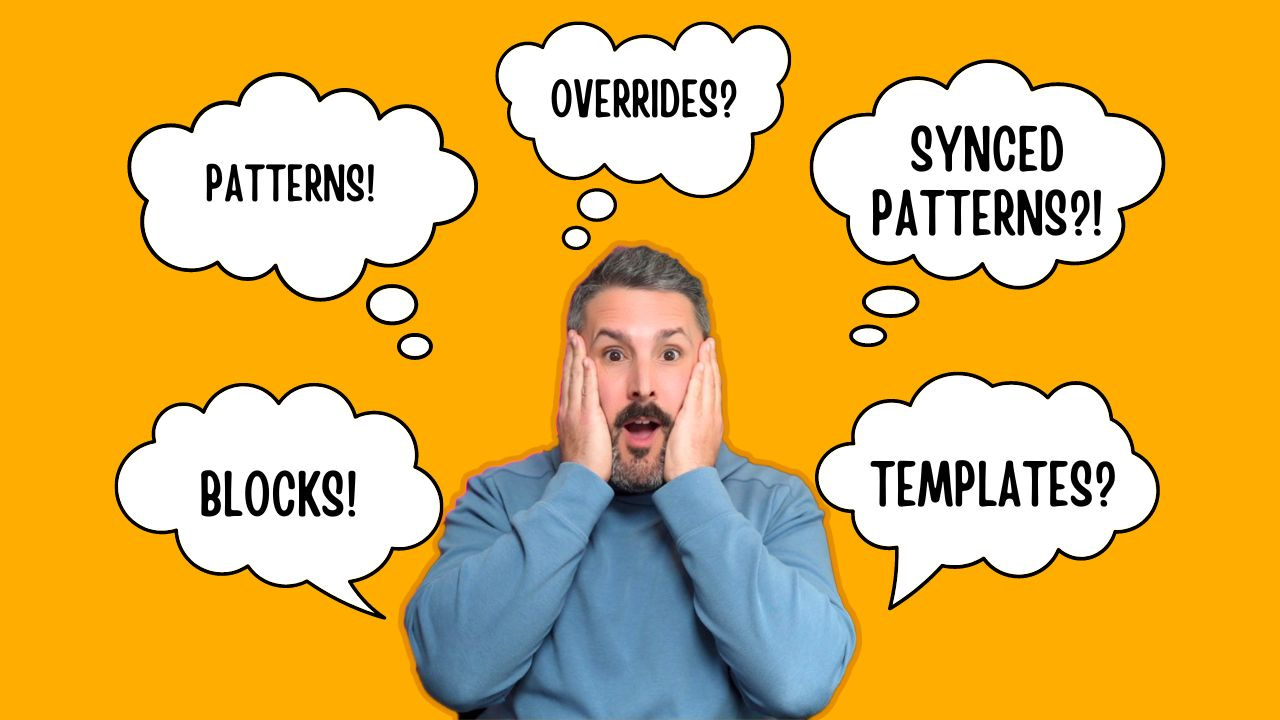As a WordPress power user, former agency owner, and full-time WordPress content creator, I’ve seen the platform evolve significantly over the years.
The introduction of Gutenberg was a pivotal moment for WordPress and the community that supports it. The adoption and iteration of the software still remains a highly debated topic.
And while WordPress professionals, website builders, and stakeholders throughout the community debate their different angles — we could be forgetting about the end user that just wants to publish content with more flexibility and greater control.
There’s no denying Gutenberg is a transformative change for the editor and its associated concepts: blocks, patterns, and templates. While it’s still up in the air about building a full website with the current iteration, making a rich blog post or creative landing page can still be a head scratcher for beginners.
In this comprehensive guide, we’ll dive deep into the world of Gutenberg and explore:
- Building modern WordPress websites vs posts/pages with Gutenberg
- Gutenberg Blocks: The smallest unit of content
- Patterns: Collections of blocks for reuse across your site
- Synced Patterns: Creating “master patterns” for site-wide updates
- Synced Pattern Overrides: Locking patterns while allowing specific edits
- Templates: The structural framework of your WordPress site
By the end of this post, WordPress beginners will have a stronger grasp on these concepts and be better equipped to harness the power of modern WordPress.
Building Modern WordPress Websites with Gutenberg
The introduction of Gutenberg marked a significant shift in how we approach WordPress website design and content creation.
Gone are the days of relying solely on shortcodes and widgets to add complex functionality to your pages. You’re not bouncing between the front-end customizer and a widget screen in the admin dashboard.
With Gutenberg, we now have a more intuitive, visual way of building with WordPress.
Gutenberg’s block-based approach allows for greater flexibility and control over your content layout. It empowers users to create complex designs without needing extensive coding knowledge. This shift has made WordPress more accessible to beginners while providing advanced users with powerful tools to streamline their workflow.
Don’t confuse “advanced user” or “power user” with a WordPress agency owner or developer.
The jury is still out on how complete this tool is when you decide to put your webmaster hat on. It’s largely why we still have dominance in 3rd party page builders like Elementor, Beaver Builder, or Bricks.
Placing that use case aside: Gutenberg is great for publishing blog or landing page content.
Gutenberg Blocks: The Smallest Unit of Content
At the core of Gutenberg’s functionality are blocks.
Think of blocks as the smallest, individual units of content on your WordPress site. A block can be as simple as a single sentence, a paragraph, or an image. It can also be more complex, like a button, a gallery, or even a custom-designed element.
The beauty of blocks lies in their versatility and ease of use. You can easily add, remove, or rearrange blocks to create the perfect layout for your content. Each block comes with its own set of controls, allowing you to customize its appearance and functionality without affecting other elements on the page.
Some common types of blocks include:
- Paragraph blocks for text content
- Heading blocks for titles and subtitles
- Image blocks for inserting pictures
- Button blocks for call-to-action elements
- List blocks for bulleted or numbered lists
- Quote blocks for highlighting important text
Understanding blocks is crucial because they form the foundation for more complex structures like patterns and templates.
That’s where the Groups block comes in.
Conceptually, you place a bunch of blocks in a group to accelerate more complex content layouts. The Group block helps unlock other design aspects like padding, margin, or background color for that collection of blocks.
We won’t dive too deep into the web designer angle of this topic, but know that’s the fundamental approach.
Patterns: Collections of Blocks for Reuse
Patterns take the concept of blocks a step further.
A pattern is a pre-designed collection of blocks that can be easily inserted and reused across your website. Patterns are incredibly useful for maintaining consistency in your design and speeding up the content creation process.
For example, you might create a “Call to Action” pattern that includes a heading, some text, and a button. Instead of recreating this structure every time you need it, you can simply insert the pattern with a few clicks.
Patterns are particularly useful in scenarios like:
- Creating consistent blog post layouts
- Designing reusable sections for landing pages
- Implementing standardized contact forms
- Crafting uniform product displays for e-commerce sites
By using patterns, you ensure design consistency across your site while significantly reducing the time spent on repetitive tasks.
This further enhances the web designer + customer relationship. As the consultant, you can craft patterns for your customers to use in a much more dynamic and visual context than shortcodes ever gave us.
Not only can customers see the content layout in their editor, there’s more control over options without having to know the syntax.
Synced Patterns: Creating “Master Patterns” for Site-Wide Updates
Synced patterns take the concept of patterns to the next level.
When you create a synced pattern, you’re essentially creating a “master” version of that pattern. Any changes made to this master pattern will automatically update all instances of that pattern across your entire website.
This feature is incredibly powerful for maintaining consistency and making site-wide updates efficiently. Imagine you have a newsletter sign-up pattern used on multiple pages. If you decide to change the text or design of this pattern, you only need to update the master synced pattern, and the changes will propagate throughout your site.
Synced patterns are especially useful for:
- Maintaining consistent branding elements
- Updating contact information or legal disclaimers
- Modifying recurring promotional elements
- Ensuring uniform navigation or footer sections
The ability to make site-wide changes from a single point saves time and reduces the risk of inconsistencies across your website.
Once again, another point in the bucket for WordPress agencies and freelancers, but also great for folks who manage content for their entire team.
Synced Pattern Overrides: Locking Patterns While Allowing Specific Edits
While synced patterns offer great control and consistency, there may be times when you want to allow some customization without compromising the overall design. This is where synced pattern overrides come into play.
Synced pattern overrides allow you to lock certain aspects of a pattern while leaving specific elements editable. For instance, you might create a call-to-action pattern where the overall design and layout are locked, but the image, headline, and button text can be customized for different pages or posts.
This feature is particularly useful when:
- Working with clients or team members who need limited editing capabilities
- Maintaining design consistency while allowing for content customization
- Creating templates with standardized layouts but flexible content areas
Synced pattern overrides strike a balance between maintaining design integrity and providing content flexibility.
Templates: The Structural Framework of Your WordPress Site
Templates serve as the overarching structure or “guard rails” for your WordPress site. They define the overall layout and content areas for different types of pages (like your homepage, blog posts, or product pages).
Templates typically include:
- Header and footer sections
- Content areas where blocks and patterns can be inserted
- Sidebar regions (if applicable)
- Post meta information (for blog posts or custom post types)
The power of templates lies in their ability to maintain a consistent structure across your site while allowing for content customization within predefined areas. For example, a blog post template might include a fixed header and footer, with a content area where authors can add blocks and patterns to create their unique posts.
Templates work hand-in-hand with blocks and patterns:
- Blocks form the basic content units
- Patterns provide reusable block combinations
- Templates define where these blocks and patterns can be placed within the overall site structure
By leveraging templates effectively, you can ensure a cohesive user experience across your entire WordPress site while still maintaining flexibility in content creation.
Conclusion: The Evolution of WordPress is Happening (Slowly)
While the concepts of blocks, patterns, synced patterns, synced pattern overrides, and templates may seem complex at first, they represent a significant evolution in how we build and manage WordPress websites.
As WordPress continues to evolve, we can expect even more powerful tools and refinements to these concepts. Embracing these changes and understanding how to leverage them effectively will help you create better, more dynamic websites with less effort.
Remember, the key to mastering these concepts is practice and experimentation.
Don’t be afraid to dive in and start building. You can run WordPress for free, in seconds, at the WordPress playground. The more you work with blocks, patterns, and templates, the more intuitive they’ll become.
For further reading and official documentation, check out these resources from WordPress.org:
Go WordPress!
Join The Newsletter
Get your favorite 5 minutes of WordPress news for busy professionals every week — 100% Free! Join the WP Minute Newsletter below 👇






